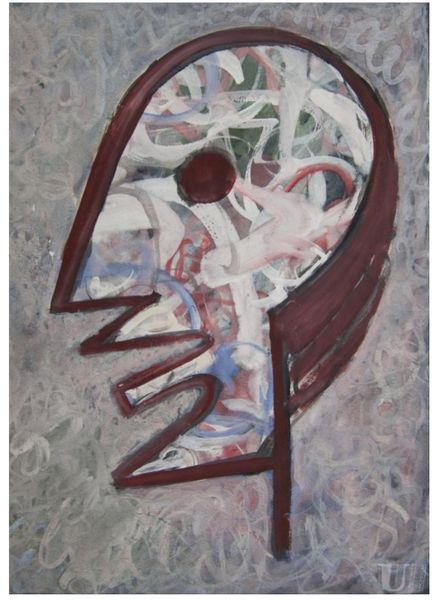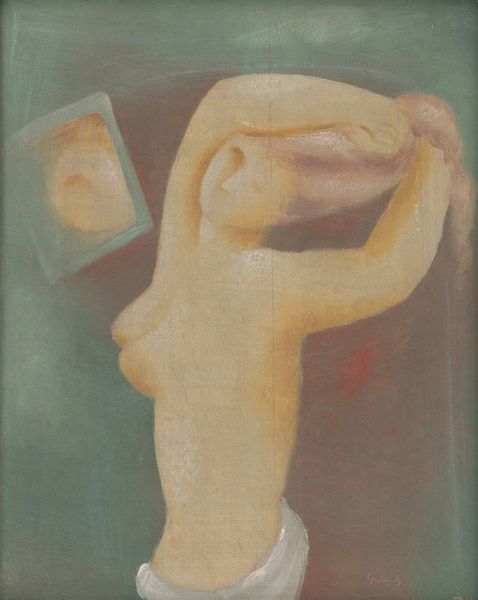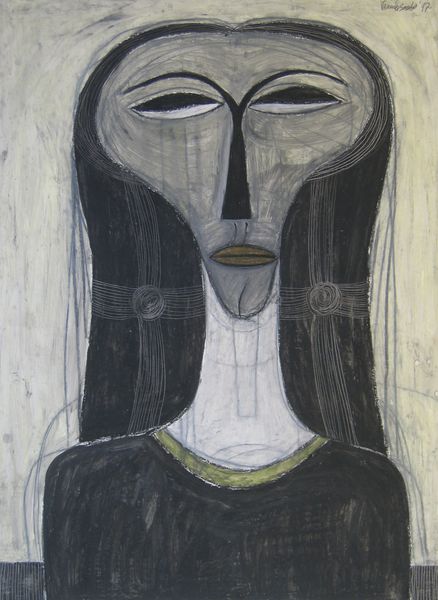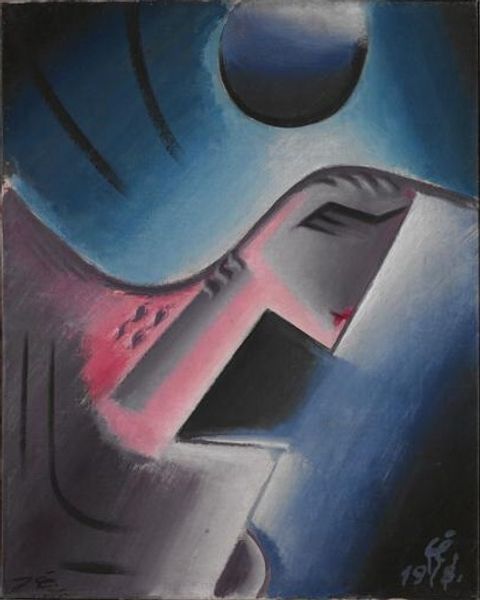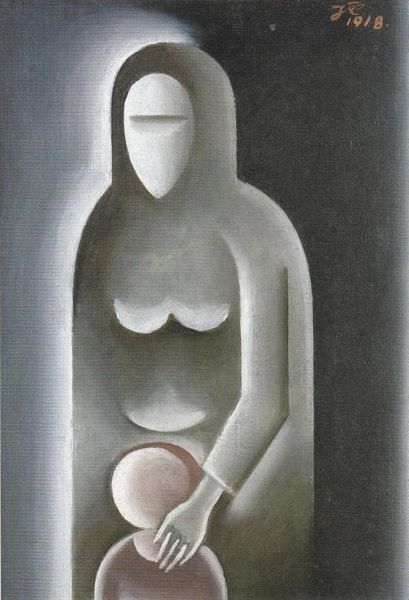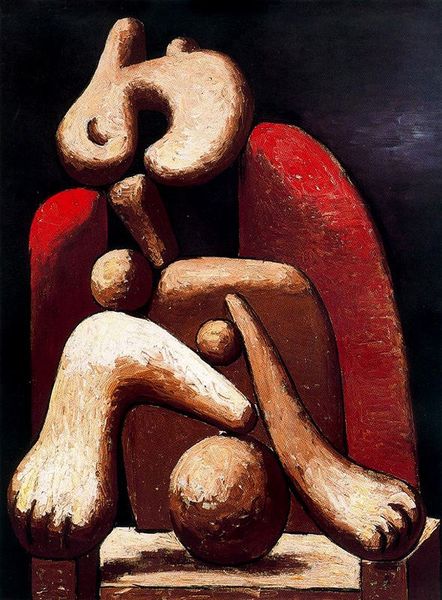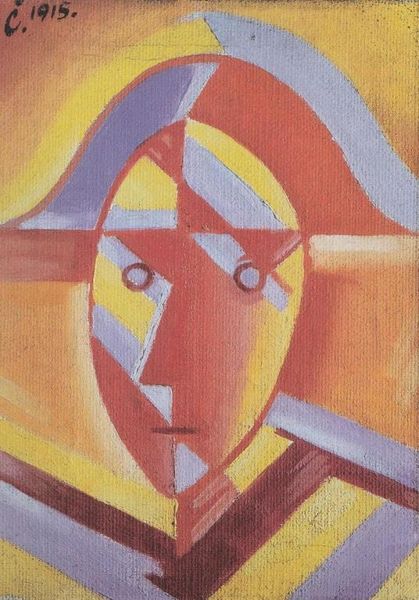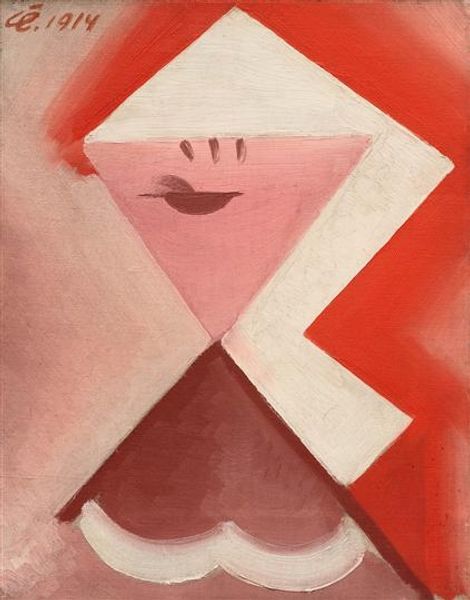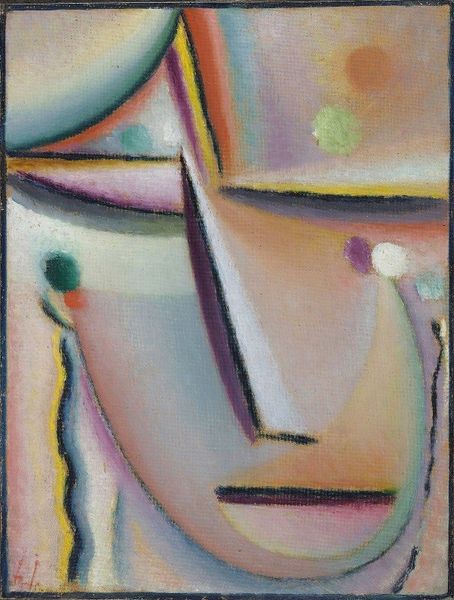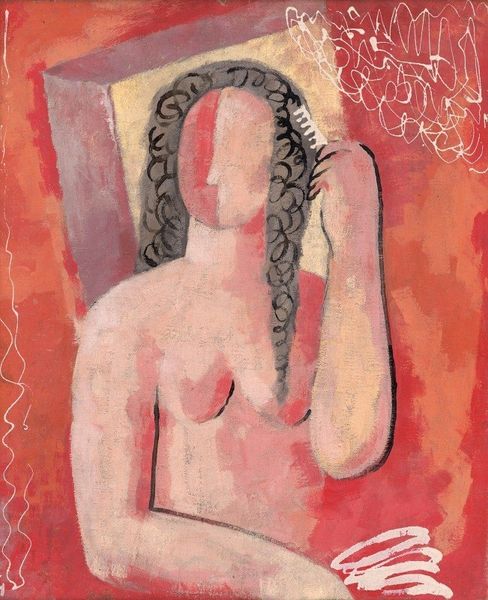
Copyright: Public domain
Josef Capek’s painting, *Hlava dívky (Slepá, Hlava ženy)*, or *Head of a Girl (Blind, Head of a Woman)*, is rendered in oil paint, a material that has a long, established history in fine art. The inherent qualities of oil, such as its viscosity and drying time, allowed Capek to build up layers of translucent colour, creating subtle gradations of light and shadow. These softer elements play against the sharp, angular planes that make up the sitter's abstracted features. Capek's engagement with Cubism, a movement that emerged in the early 20th century, infuses the work with social significance. Cubism aimed to challenge traditional modes of representation, reflecting the fragmentation and alienation of modern life. By employing these techniques, Capek imbued the artwork with a sense of modernity and intellectual depth, while also nodding to broader social issues of perception, representation, and the changing role of art in a rapidly evolving world. These considerations challenge traditional distinctions between fine art and craft, emphasizing the importance of materials, making, and context in understanding the full meaning of an artwork.
Comments
No comments
Be the first to comment and join the conversation on the ultimate creative platform.



